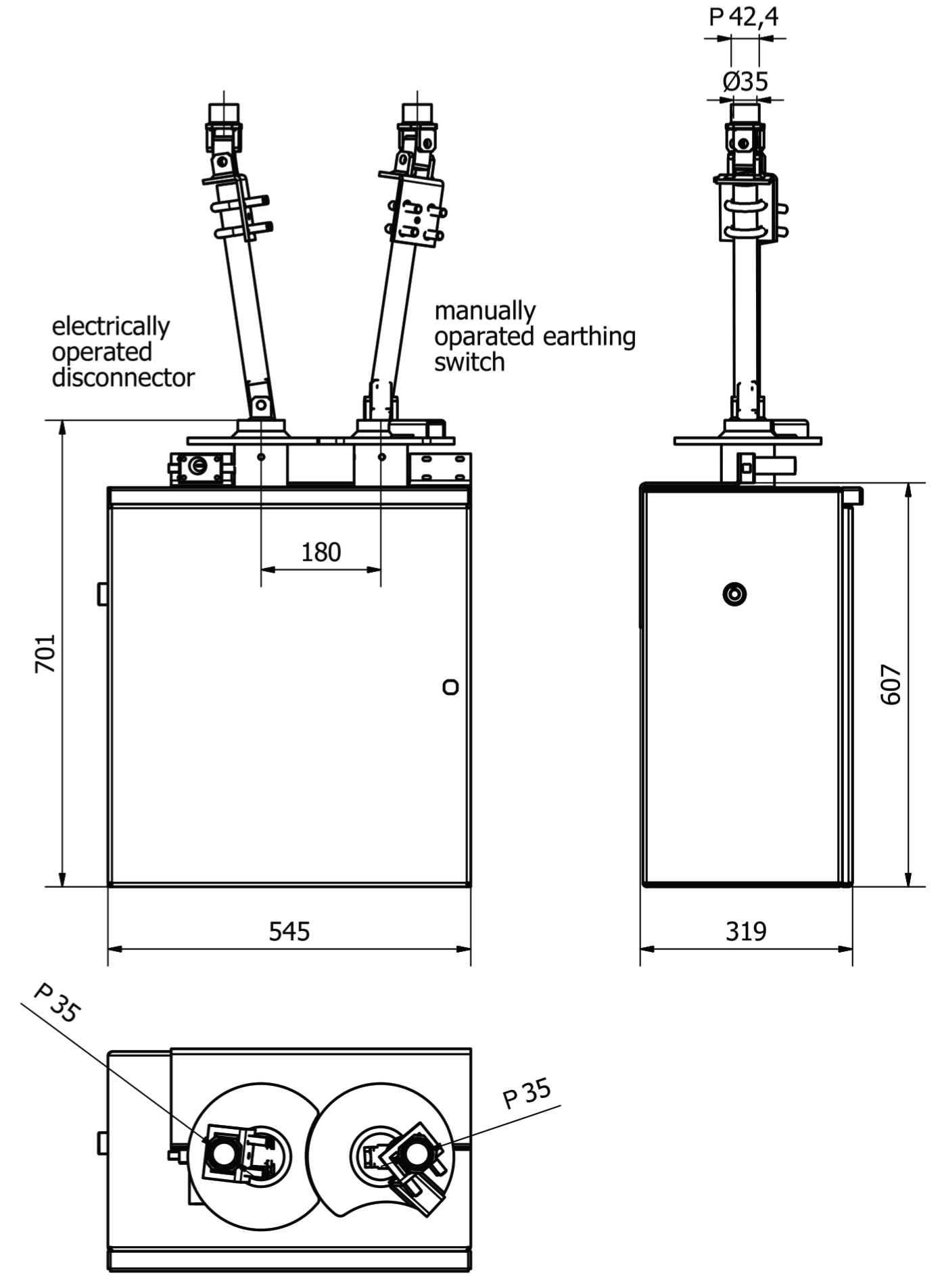Motor drive 110 kV NSO 110 / NSO 110 MH / NSO 110 MM
Application:
Motor drives type NSO 110 are designed to close and open disconnectors with high voltage outdoor disconnectors and earthing switches with a rotation angle to be adjusted of 192° and the closing and opening resistance moment does not exceed 800 Nm. The drives are designed for use with disconnectors and earthing switches 72,5, 110 and 220 kV. These are the ideal replacement for manual or pneumatic drives.
Advantages:
- simple design
- high torque for easy maneuvering of single- and three-pole disconnector assemblies in the most difficult climatic conditions
- versatile electrical equipment with auxiliary and control equipment with signaling connector
- anticorrosive protection of the casing due to the use of aluminium sheet and painting
Operating conditions:
| PARAMETER | VALUE |
| Temperature | -40 up to +40°C |
| Air humidity | up to 100% when 293 K (20°C) |
| Sea level altitude | up to 1000 m |
| Wind speed | up to 30 m/s |
Technical data:
| NSO 110 | NSO 110 MH P/L* | NSO 110 MM | |
|
Rated voltage/rated current: squirrel-cage motor DC motor |
230 VAC
|
||
| Contactor coil monitoring the motor supply voltage | 400 VAC/ 220 VDC/ 110 VDC/ 24 VDC | ||
| Radiator | 230 VAC/ 220 VDC/ 110 VDC | ||
| Contactor coil | 230 VAC/ 220 VDC/ 110 VDC/ 24 VDC | ||
| Electromagnetic lock | 220 VAC/ 220 VDC/ 110 VDC/ 24 VDC | ||
|
Rated power:
|
|
||
|
Moment on the shaft:
|
|
||
| Adjustment time of the high voltage switch | 15 s. | 10 s. | |
| Number of rotations for manual manoeuvring | 100 | 50 | |
| Rotation angle of the main shaft | 192° | 90° | |
| Rated switching capacity of the auxiliary contact |
|
||
| Protection class of the housing | IP 54 | ||
| Weight | 51 kg | 138 kg | 149 kg |
| Rated mechanical durability | 2000 cycles | ||
* The drive is equipped with two drive mechanisms - manual and motor, which can be mounted on the right or left side (P/L), depending on the needs.
Technical drawings, wiring diagrams:
Declarations of conformity:
All technical data presented in the catalog can be changed due to technological progress.
Download:
Generate a catalog card (beta):





